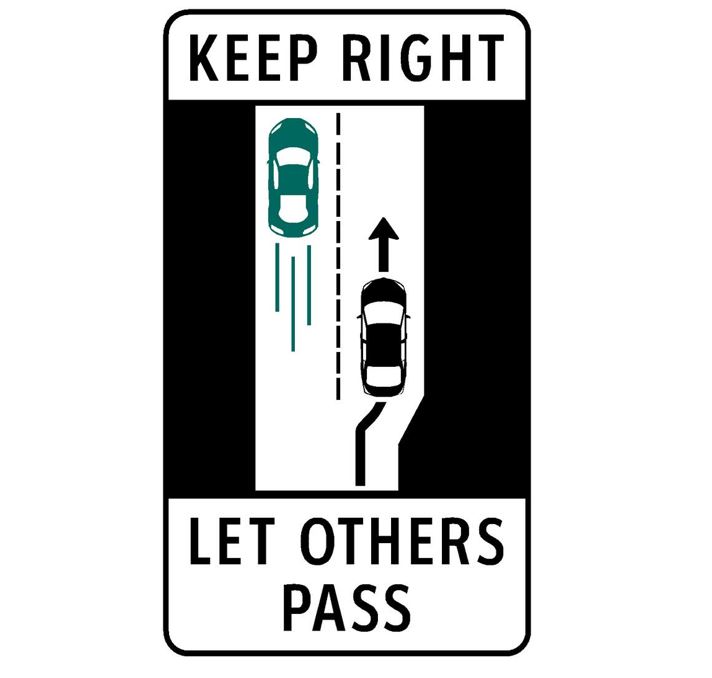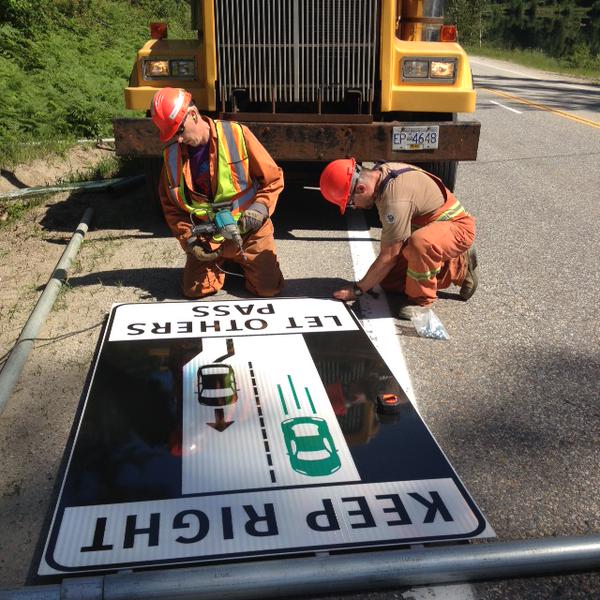 If you’ve ever found yourself stuck behind a slow moving vehicle travelling in the left lane of a BC highway, chances are pretty good you know why this rule is in place. Slower-moving vehicles in the left lane not only reduce the efficiency of our highway system, they also cause frustration to many motorists trying to move more quickly. This results in aggressive and erratic driving behavior which is unsafe for everyone.
If you’ve ever found yourself stuck behind a slow moving vehicle travelling in the left lane of a BC highway, chances are pretty good you know why this rule is in place. Slower-moving vehicles in the left lane not only reduce the efficiency of our highway system, they also cause frustration to many motorists trying to move more quickly. This results in aggressive and erratic driving behavior which is unsafe for everyone.
During our 2014 province-wide Rural Highway Safety and Speed Review , complaints about drivers “hogging” the left lane – despite direction in the Motor Vehicle Act that slow drivers should use the right lane, were a prominent theme. The safety of the travelling public is our primary goal, which is why we updated our legislation to give enforcement agencies and motorists alike more details about how this rule works on BC Highways.
Keep Right, Let Others Pass Legislation Prohibits Driving in the Left Lane unless a motorist is:
- overtaking and passing another vehicle
- moving left to allow traffic to merge
- preparing for a left hand turn
- passing a stopped official vehicle displaying red, blue or yellow flashing lights, such as: police cars, ambulances, tow trucks, maintenance or construction vehicles
Who Does the Rule Apply To?
The law applies to all motorists travelling on BC highways with two or more lanes of traffic travelling in the same direction and a posted speed limit of 80 km/h or greater.

Signs demonstrating the law are in place across the province. Line markings have also been changed and now direct traffic into the right lane. Please obey them and keep the rule in mind when travelling BC Highways. This law is fully supported by ICBC and provincial law enforcement agencies. Drivers failing to keep right can be fined $167 and three driver penalty points.
Do you have any questions or comments about this law? Let us know in the comments below and we will try to get you an answer. You can also connect with us on Twitter and Facebook or search out some Frequently Asked Questions.
Did you enjoy this article? You might be interested in these related links:
Join the discussion